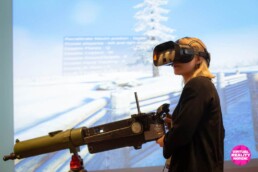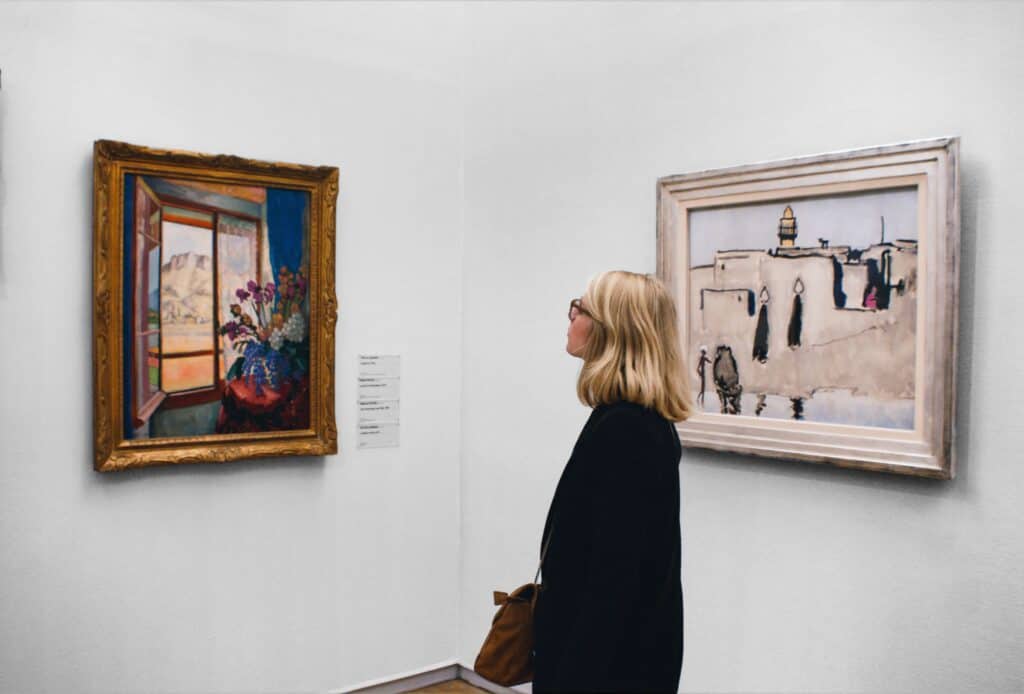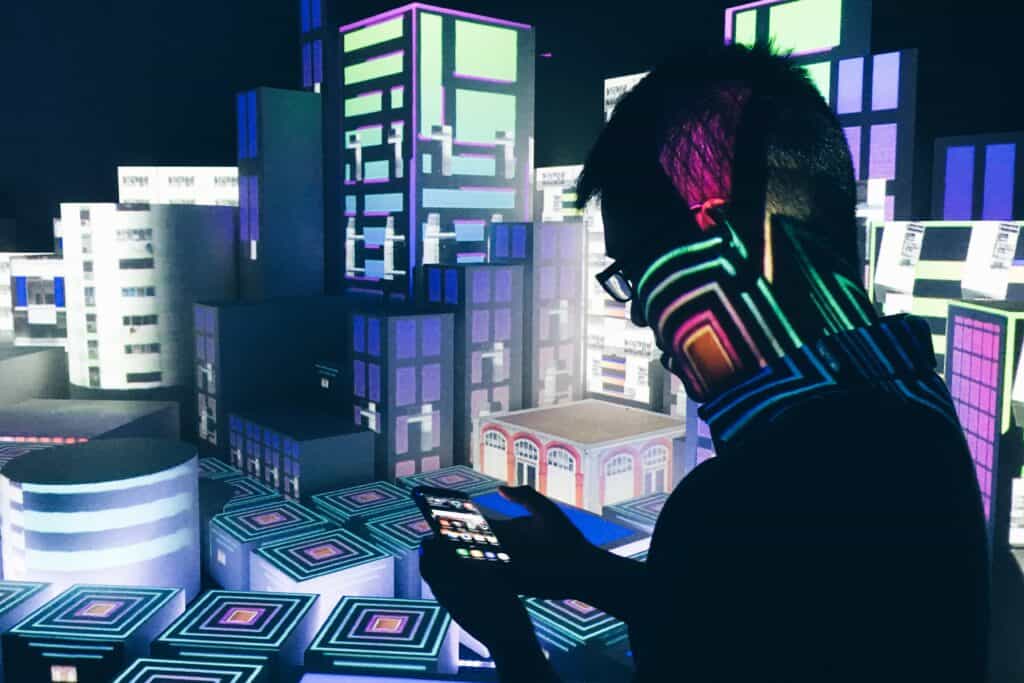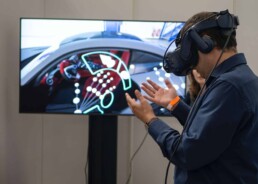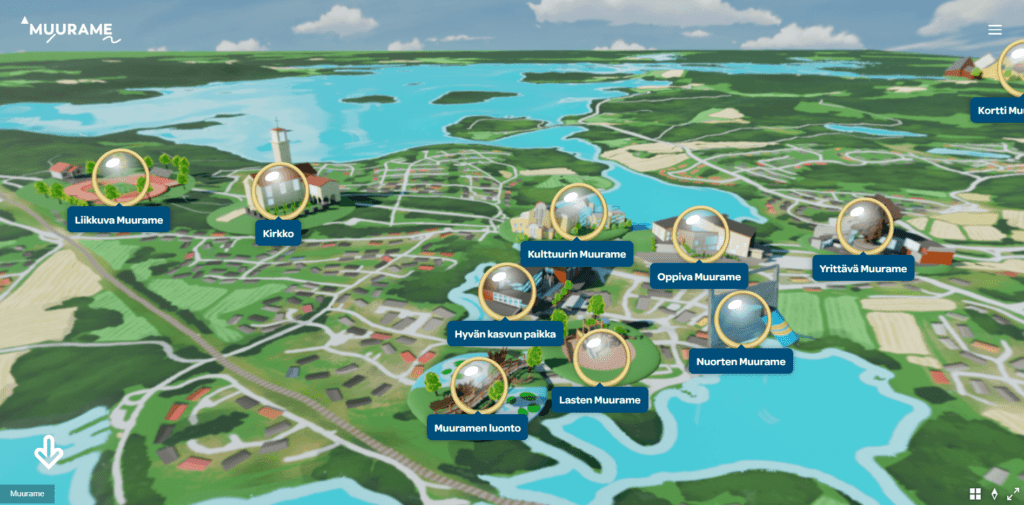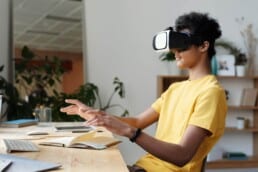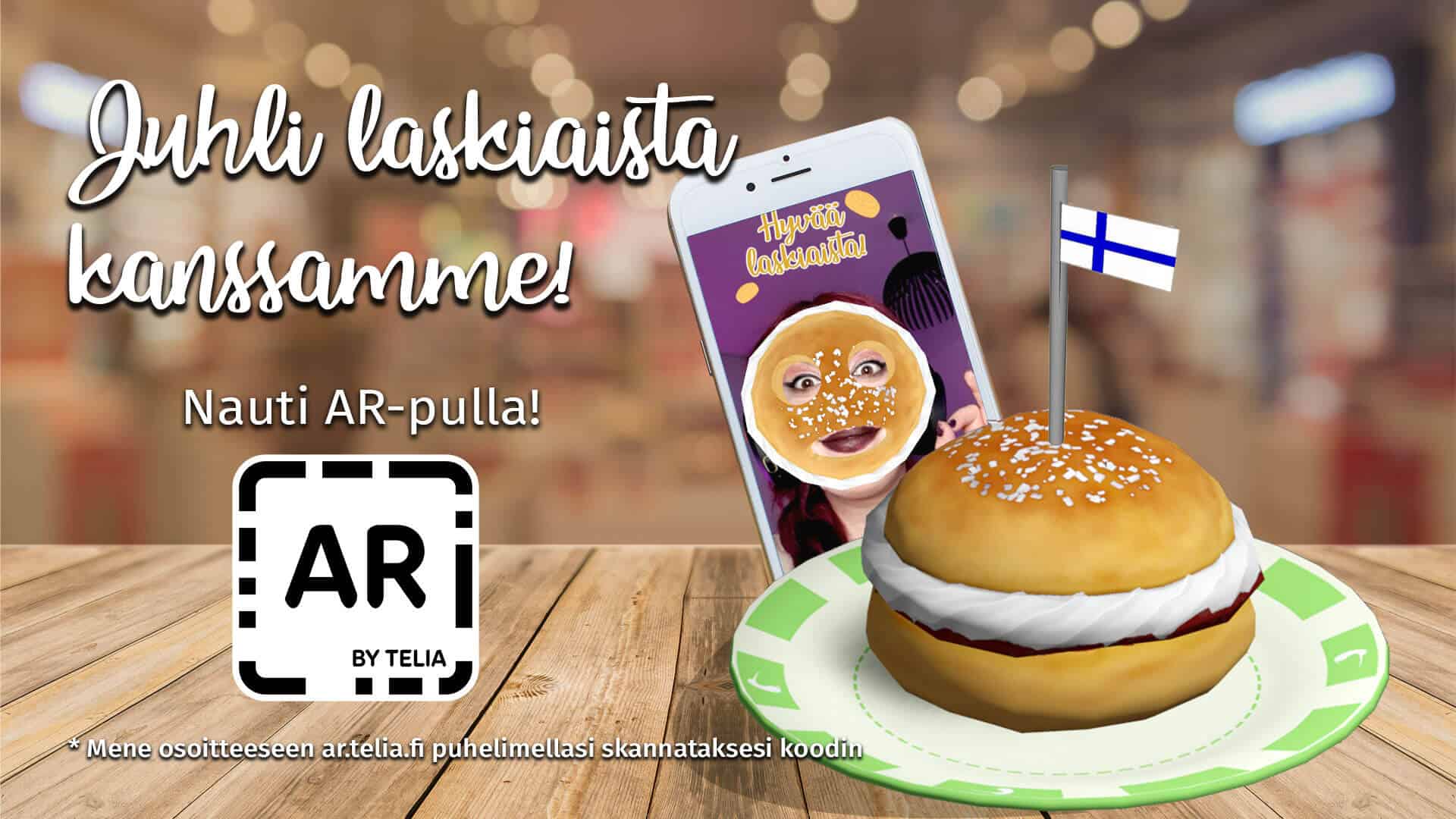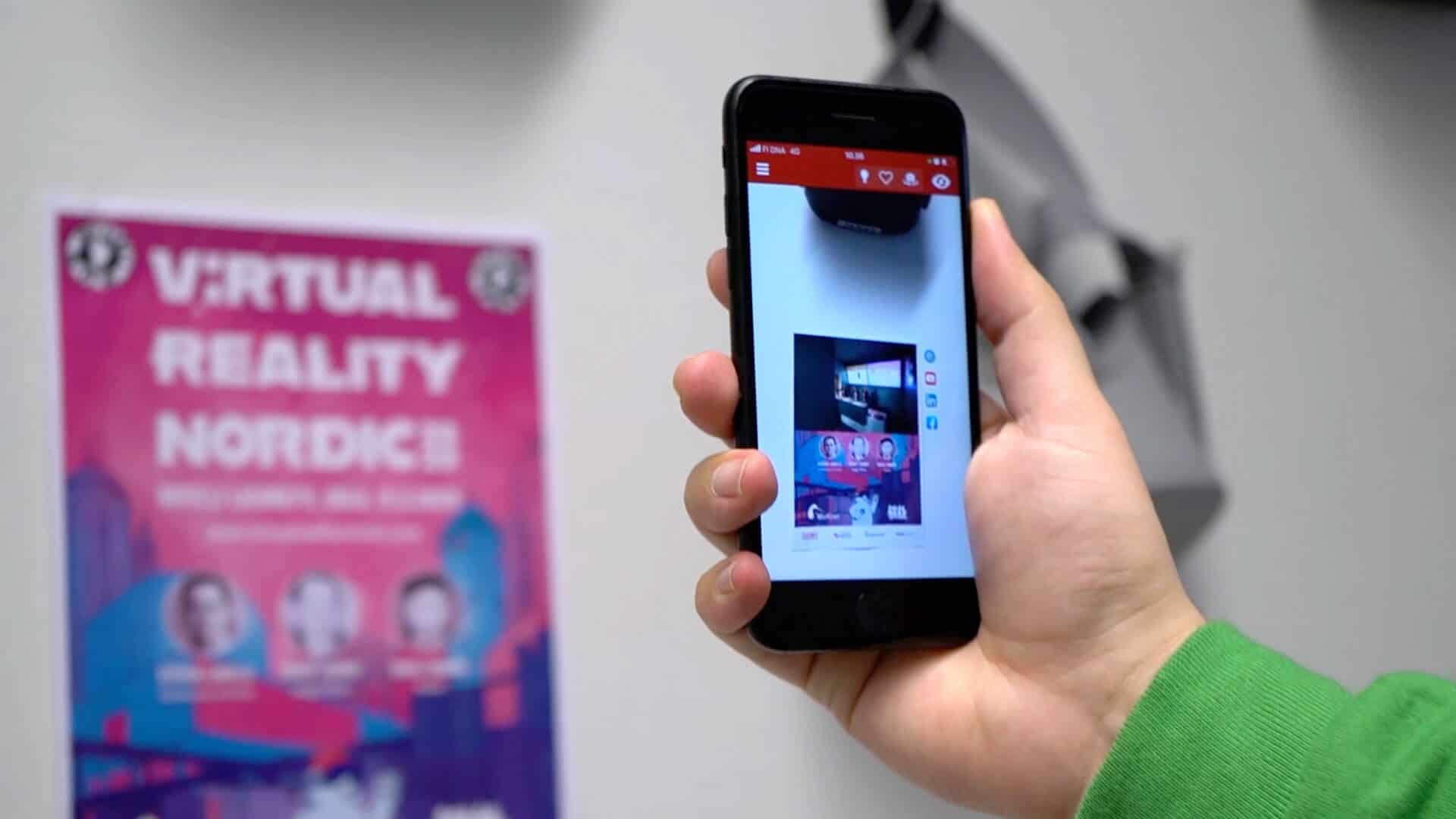Metaverse opens up for business
Game development has brought the virtual world to homes. The digitally native and global Gen Z has grown up with advanced graphics for computer games. Their experience and attitudes set high standards for the virtual user experience.
The Metaverse is the virtual world of the future. It is where people enjoy themselves, buy and work virtually. User simultaneity allows them to interact and communicate with each other in a shared virtual environment.
Metaverse and multisensory experiences
Virtuality creates new kinds of opportunities for business. The Metaverse offers customers a multi-sensory customer experience through virtual, real-time interaction.
Today, virtual reality (VR) in the metaverse is, for example, a commercial VR environment where customers can explore the products and services on offer in 3D showrooms or simulated use cases.
Customers create a virtual character for themselves, which allows them to move and chat with other virtual characters in the same space. The virtual 3D environment and models help the customer to get familiarised with the features of products and services and thus make it easier, for example, to make a purchase decision. A well-designed virtual tour reduces the customer’s product returns and the need for customer service.
VR technologies enabling the metaverse
Virtual applications enable a virtual experience of things, places, and situations that are currently inaccessible.
The goal of a VR application is to create a lifelike, virtual, customer experience, to the extent that it is appropriate. A good example of this is the Simboat VR application developed in collaboration between MeKiwi and XR Marine. The highlights of boating are present virtually, allowing the customer to discover a new boat model even before the ice starts to melt.
The technologies enabling the metaverse are AR (Augmented Reality) and VR (Virtual Reality) and the intermediate form MR (Mixed Reality). They are based on XR (Extended Reality).
In the AR experience, virtual content is connected to the real world with the help of an AR-supported application or browser. A familiar example for many is the Pokémon GO game. In it, the player searches for Pokémon characters that are connected to the real world. Additional information or instructions on a product or service that can be accessed via a QR code is also an AR experience.
In a VR application, the virtual environment is viewed with VR glasses that exclude the outside world. In the environment, you interact with objects manually or with VR controllers. Visuals, sounds, and interactions with the environment create an immersive VR experience.
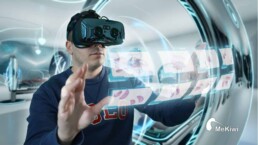
The use of the metaverse is increasing
Hyper-realistic, shared and multi-sensory virtual worlds are on the rise. The most advanced virtual environments are for business and industry. The adoption of Metaverse in the consumer market requires advances in devices, applications, platforms and connectivity.
According to Nashant Batra, Nokia’s Chief Strategy and Technology Officer, the first 5G-Advanced deployments will begin in 2025, when the coverage of the metaverse will increase dramatically. For more detailed technical information, see the guide Metaverse matters: A guide to an immersive future published by Nokia.
The metaverse is implemented by professionals
The aim of the VR experience is to achieve the immersiveness familiar from the gaming world, where the user is immersed in their VR experience. The aim is to create a VR environment in which the operating principles of the real world are reflected. A good example of a VR environment is MeKiwi’s latest VR game, Cave Digger 2: Dig Harder.
A positive user experience is created by skillful technical implementation and smooth service. The best results are achieved by a professionally multi-skilled product development team that includes software developers, graphic designers, UI/UX designers and service designers.
Want to boost your business with virtual reality? As professionals in game development and digital marketing and sales, we can help you make the most of virtual technology.
We will familiarise ourselves with your company’s needs and create an overall picture of the development project for you. We tell you what we do, how we move forward and what we achieve together.
We have been involved in the story of many customers. Check out the references and blogs on our website.
How extended reality (XR) brings value to museums
XR is an umbrella term that covers virtual reality (VR) and augmented reality (AR). Visiting museums and exhibitions can be both fun and educational. Thanks to XR technology, it is possible to create real-world experiences and get closer to history and art in a fun and immersive way.
XR takes the exhibition to a new level
XR offers a way to bring the exhibition to life in a whole new way. Virtual reality, for example, allows a user to travel in the middle of a natural site where they can view different species of animals in their actual scale, such as tigers or bears in their own habitat or see already extinct animals.
A visitor can be taken on a trip to a historic site to explore for example what the Colosseum used to look like a long time ago. More information about works of art can be presented with augmented reality, or sound effects or music can be added to them. Virtual reality allows the visitor to be creative and create their own art or to interact with existing artworks, for example editing them as they wish.
Alternatively, the whole physical exhibition can be brought to virtual reality, which in itself opens up completely new possibilities. In the museum, however, XR’s purpose is to support the exhibition and not just steal the spotlight.
XR enhances learning
Learning can sometimes be experienced even as challenging or dull, but museums provide an excellent learning environment for all ages. The interactive works enrich the visitor’s experience of the exhibition, and XR enables the visitor to participate and immerse themselves in the exhibition even better. A more intense experience is more impressive and there have been studies that XR also helps to recall what a person has experienced or learned more easily than without XR, this is especially useful for educational purposes.
Examples of XR used in museums
Many museums abroad and in Finland have utilized XR technology in their exhibitions. A well-known example is the Louvre, where visitors were able to explore famous paintings in more detail and how they had changed over time using virtual reality. The Finnish National Museum has also previously introduced virtual reality in an exhibition where visitors could step inside the painting and communicate with the characters in the painting.
MeKiwi’s XR projects
MeKiwi has created a fully immersive demo of Finnish Winter War VR-experience, known as “Operation Suentassu”. The project started when a new war museum was starting in Mikkeli and we were offering our services for a war VR experience. The intention was to create a realistic, short segment teaching about the horrors of war without it being a too raw experience. This demo project utilized the latest Mixed Reality technology, creating a mix of real and virtual worlds. The project utilized the newest VR-technology and authentic, deactivated Suomi KP/-31 as a controller instead of a traditional VR-controller. With this experience one can relive history that makes them feel like they are physically there.
We also implemented a virtual museum for the municipality of Muurame, where the user can view spaces as a 360° environment, most of which are based on actual places in Muurame. The user can for example visit Muurame church and view the choir performance in a 360° environment. The project was implemented in honor of the 100th anniversary of the municipality of Muurame and aims to present services, recreational opportunities, diverse nature and history of Muurame.
Contact us if you are interested in the topic or want to hear more about what kind of XR solutions we can offer.
MeKiwi showcase for the Sapporo xR Exhibition
MeKiwi participated in the Japan Sapporo xR Exhibition 2022. Our expert Merih Arikkök provided a quick overview of MeKiwi’s skills and services, showcasing previous customer cases and references.
As extended and immersive reality solutions can be successfully employed in many different areas, the examples provided in Merih’s presentation covered a wide range of sectors.
Learning solutions and training simulations
As an educational prototype we developed Histology XR, an innovative healthcare learning experience in XR for medical staff, students and lecturers.
With this tool, users can study microscopic images & samples in an immersive virtual environment, with the freedom to zoom in, seamlessly switch between samples, collaborate with others and teach peers.
It uses “true eye view” technology, eye tracking and hand tracking, features of the world’s most advanced Mixed Reality headset, Varjo XR-3.
Another example provided of a learning solution in XR was the security personnel training simulation created for the OSAO vocational school. Since students couldn’t attend school in person during the pandemic, MeKiwi helped overcome this challenge by bringing practical training into the students’ homes through virtual reality.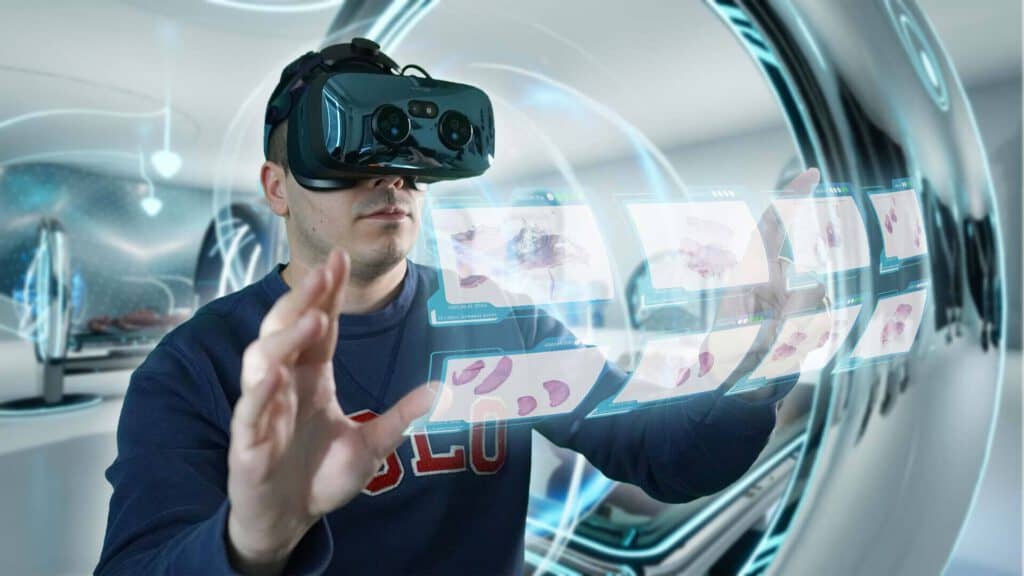
Entertainment, education and tourism
The other showcased projects could all bring added value to entertainment, education and tourism areas.
This is the case for Operaatio Suentassu, a fully immersive Finnish Winter War Mixed Reality experience. It was developed using Varjo XR-3 and HTC Vive Tracker in MR where the user can handle the actual gun, a deactivated Suomi KP/-31, and see it and use it as a controller in game.
We also worked on an immersive boating simulation that was created for the Finnish company XR Marine. We 3D modeled an original motor boat based on the company designs and included it in an immersive XR experience.
The last example for XR uses in tourism was the AR experience for the city of Muurame, Finland, where by visiting the local church in AR the users can watch the kids’ choir sing. Also links to the city’s virtual museum and services were included in the application.
More than meets the eye
Using any type of extended reality solely for gaming purposes would be limiting to the actual capabilities of the technology.
It is no surprise that learning by doing helps retain information more than a frontal, passive, type of lesson, and “living” in an historical event is more impactful than reading about it.
Wanna be inspired by some of our previous works? You can find them here. If you want to bring your project to the next level with XR contact our Customer Success Manager Jonna or our XR Expert Merih.
How the travel industry can benefit from XR technology
You may be familiar with XR technology and how it is used in the gaming sector, but many other industries can also benefit from it. In this blog we briefly concentrate on how the travel industry can utilize XR.
What does XR mean?
Extended Reality (XR) is a term that refers to all the immersive technologies, such as virtual reality (VR), augmented reality (AR), and Mixed Reality (MR).
Digital visibility is vital to companies and what could be better than XR technology and its endless possibilities and scalability. Utilizing XR technology also gives the company a competitive edge on social media by creating more interesting content for the visitor. Especially after corona restrictions, we had to adapt to a “new normal”, which inevitably increases XR technology and virtuality in general.
XR technology and travelling
XR technology can be used, for example, in the marketing of a travel destination. Many travelers search a lot in advance about different travel destinations and their attractions and activities. In this case, marketers can create a 360° video of the destination that the end user can view even in their own living room. When an user has better and more extensive access to exploring their destination in advance, they are much more likely to book that trip, compared to a trip or destination where there is not enough information available. The traveler can navigate the desired route or attractions in advance, which will save them time. This also helps the traveler to choose the right destination for them and helps to plan the trip, for example, in terms of equipment. In addition to the destination itself, the accommodation/hotel can be marketed as well.
Virtual tours could also be created especially when traveling to a destination is physically inconvenient or otherwise restricted. With XR technology, the visitor gets much more out of the trip, they can explore more destinations or focus on one more intensively. Thanks to the latest technology, virtual travel destinations or virtual elements embedded in the physical world are even more immersive.
Technology in the middle of nature and in the city
XR technology can be utilized both on nature trails and in the middle of the city. In both cases, the XR can be used to provide information about the environment to the user, whether it is a type of tree or animal species or, for example, a statue or some other area or object.
For example, a user can scan a statue or even a QR code using their own phone to display information about that place on their phone screen, by text, video or an audio track, all of these can be combined as well. How does it sound to view a place through the eyes of history? You are physically present in a modern environment and at the same time you can view how that area looked like a long time ago.
MeKiwi has developed many extended reality projects. For example, the Digimuurame.fi multimedia website that MeKiwi created for the municipality of Muurame allows users to visit the Muurame Church, listen to the choir in an augmented reality, or even go on an adventure with a canoe and mountain bike in Muurame’s nature via 360° video experience. MeKiwi has also implemented an AR application called “Oulujoen ympäriajo” for a thrilling orienteering experience in cooperation with Oulujoki School’s students and teachers. Among other things, the app helps promoting student participation and creativity.
From an idea to the solution
In April 2022, Business Finland organized a funding application to support sustainable growth and digitalisation in traveling, which implements Finland’s Sustainable Growth Program, which aims to build a greener and more digital society. The purpose was to highlight how to make a tourist stay longer, the year-round tourism and traveling and new customer groups. XR solutions can meet these needs.
If XR technology was a previously unknown topic, you can read more on MeKiwi’s website and contact our account manager Jonna Ranta or our XR expert Merih Arikkök.
Meta- Metaverse, Better Business Solutions with Modern Technologies
The Beginnings
Facebook’s recent rebranding as Metaverse (Meta) has made the concept popular, but the term existed long before this. “Metaverse” is first mentioned in Neal Stephenson’s novel Snow Crash. The story depicts a virtual reality world run by a monopoly corporation that wants to control the lives of the service users.
Social media has proven to be an excellent tool for businesses to find new customers, promote sales and build trust and loyalty with customers. Mark Zuckerberg’s focus on Metaverse aims to take us to the next level of an internet that works in virtual reality. Users can work and play in the online virtual world and, through it, connect to each other, to products and games in a more immersive way than ever before.
What Technologies Make Up the Metaverse
The Metaverse consists of interconnected virtual worlds that exist even when there are no users online. Users can connect to these worlds with virtual or augmented reality glasses, for example. In virtual reality, the user is fully immersed in the virtual world, and in augmented reality, the virtual world is drawn into the normal world, allowing the user to navigate both simultaneously.
The Metaverse also includes a digital economy where users can create, buy and sell goods. In futuristic scenarios, the worlds would be so compatible that users could take virtual objects, like clothes or vehicles, from one platform to another. In the real world, you can buy a shirt in a shopping centre and then wear it in a cinema. Currently, most platforms have virtual identities, or avatars, that are tied to only one platform, but the Metaverse can allow you to create a personality that you can bring anywhere as easily as you can copy your profile picture from one social media to another.
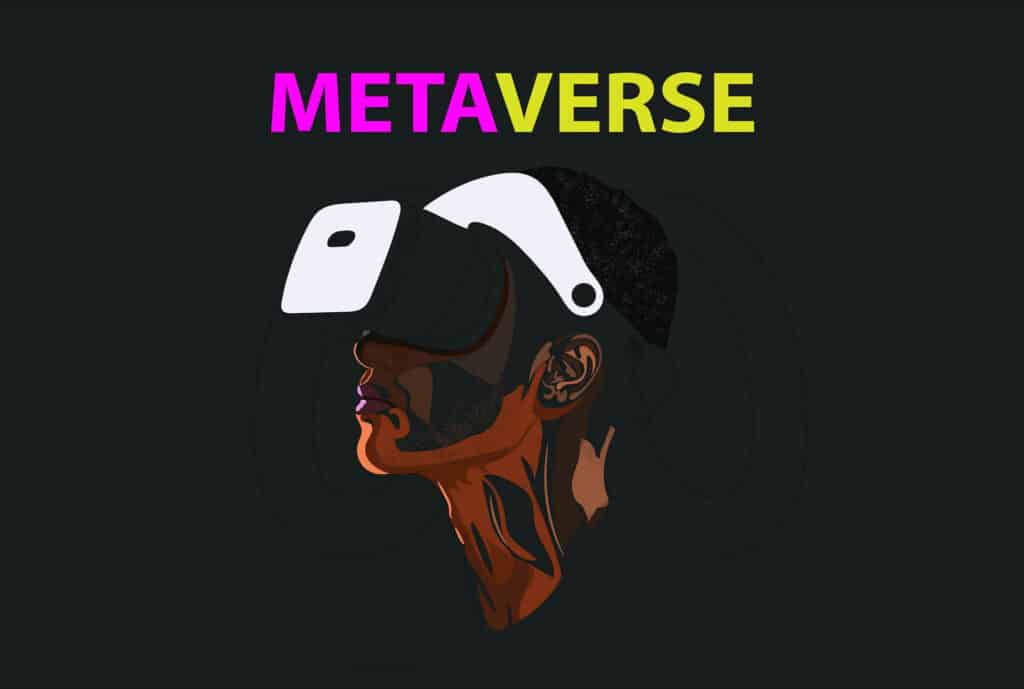
The Role of Transparency
In the “rules of the Metaverse”, Tony Parisi says that the Metaverse should be an open source project built for everyone without anyone controlling it. The current Internet works with these rules, and since the Metaverse is a more immersive version of it, it should therefore be built on similar foundations.
It would be important for business owners and decision makers to understand the technologies that are driving Metaverse forward and what impact they may have on the users, the environment and our society. By understanding these technologies, companies can find new ways to enrich our society through the constructive uses of virtual reality connectivity that develop our world and keep the digital economy thriving.
Nature of the Metaverse Content
Understanding the technologies that enrich the Metaverse is in the interests of companies, as they can bring benefits to the business, such as a better customer or user experience, more efficient processes, better security and more immersive entertainment.
Companies also need to understand that as the Metaverse landscape evolves, the nature of the content will also change. Creating quality content marketing strategies with these immersive virtual environments in mind is essential as the industry progresses.
At its core, the Metaverse is defined by being an immersive experience for users, and this would not be possible without AR and VR technologies. The terms Metaverse and VR are often used interchangeably, but there are differences. The Metaverse is meant to be an interconnected VR experience. When the user accesses the Internet communities in the form of an avatar, the definition of Metaverse is met. In the future, the Metaverse may expand to other futuristic technologies. AR and VR are the cornerstones of Metaverse projects. Augmented reality systems use three elements together: real and virtual environments, real-time interaction and accurate 3D visualisations.
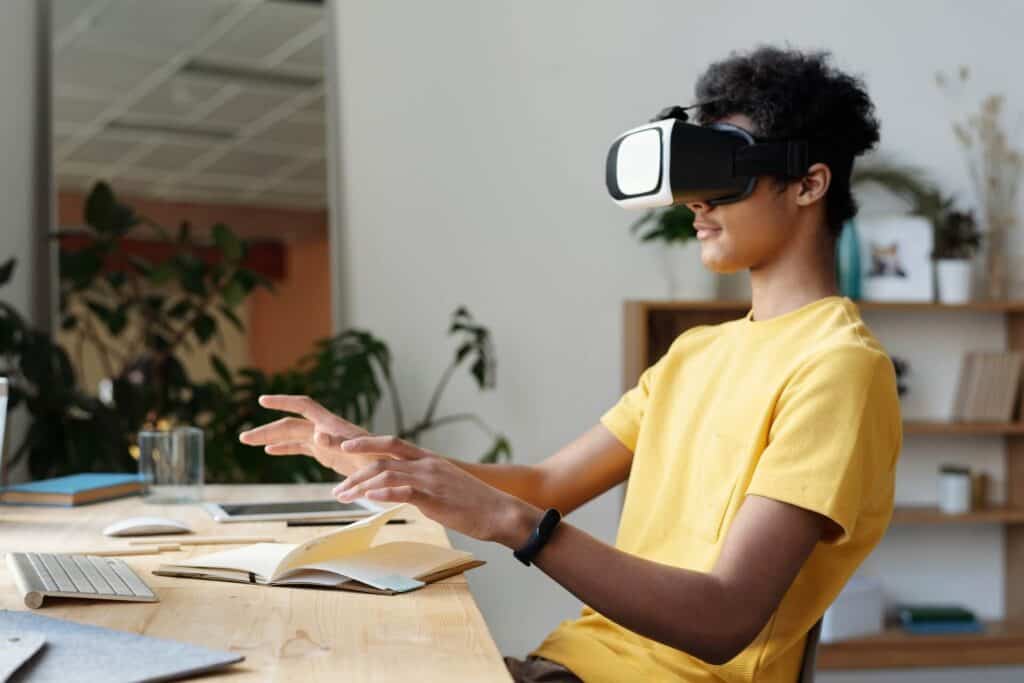
Ethics and Responsibility
If we consider technologies ethically and responsibly, we can find ways to truly help customers by growing their business. These technologies aren’t meant to replace the real world, but instead expand the understanding of the internet and share experiences in ways that weren’t possible before.
Augmented reality Christmas window
In cooperation with the City of Oulu and the Oulu Chamber of Commerce, MeKiwi created an augmented reality (AR) experience with a Tiernapoika theme in the center of Oulu. Christmas window will be on view from 3rd of December 2021 to 6th of January 2022 in front of the Oulu10 office at Saaristonkatu 8.
Test the Christmas window live by scanning the QR code from the window or visit mekiwi.org/jouluikkuna and scan the Tiernapojat on the window.
You can also test the Christmas window on a small scale remotely directly from this screen by going to mekiwi.org/jouluikkuna on your phone and scanning the Tiernapojat from the image below. So if your location is other than Oulu, no worries, test the AR Christmas window remotely!
MeKiwi wishes you a Merry Christmas!

What does Augmented Reality (AR) mean and what is an AR experience?
Augmented reality, best known as AR, is more common than you think.
You’ve probably tried it at least once without noticing, because AR has been one of the rising trends in technology since 2017! The most common examples of AR are the Snapchat and Instagram face filters that most of us have tried at least once.
If you feel like you aren't familiar with it yet don’t worry, as we’ve put together a short and helpful explanation of what augmented reality (AR) is, how it works, and how it differs from virtual reality (VR); and most importantly, how your business or school can benefit from AR technology!
What does augmented reality (AR) mean?
AR is short for Augmented Reality which is the software technology that expands our physical world by adding digital items into it. Unlike Virtual Reality (VR), it does not create a whole new digital world but integrates digitally created content into our existing environment.
You can directly see the augmented reality in action in an existing environment, such as a digital dragon flying in your living room. Unlike virtual reality (VR), you can access augmented reality (AR) content without wearing an headset. AR can be displayed on various devices: screens, glasses, handheld devices, head-mounted displays and mobile phones – which makes it accessible for almost anyone, anywhere as long as there is a mobile device.
What's the difference between VR and AR?
Augmented Reality (AR) is a technology that brings and connects computer-generated, 3D-designed objects to your real world. Virtual reality (VR) consists of a fully computer-generated virtual world where the user can experience a completely immersive virtual experience.
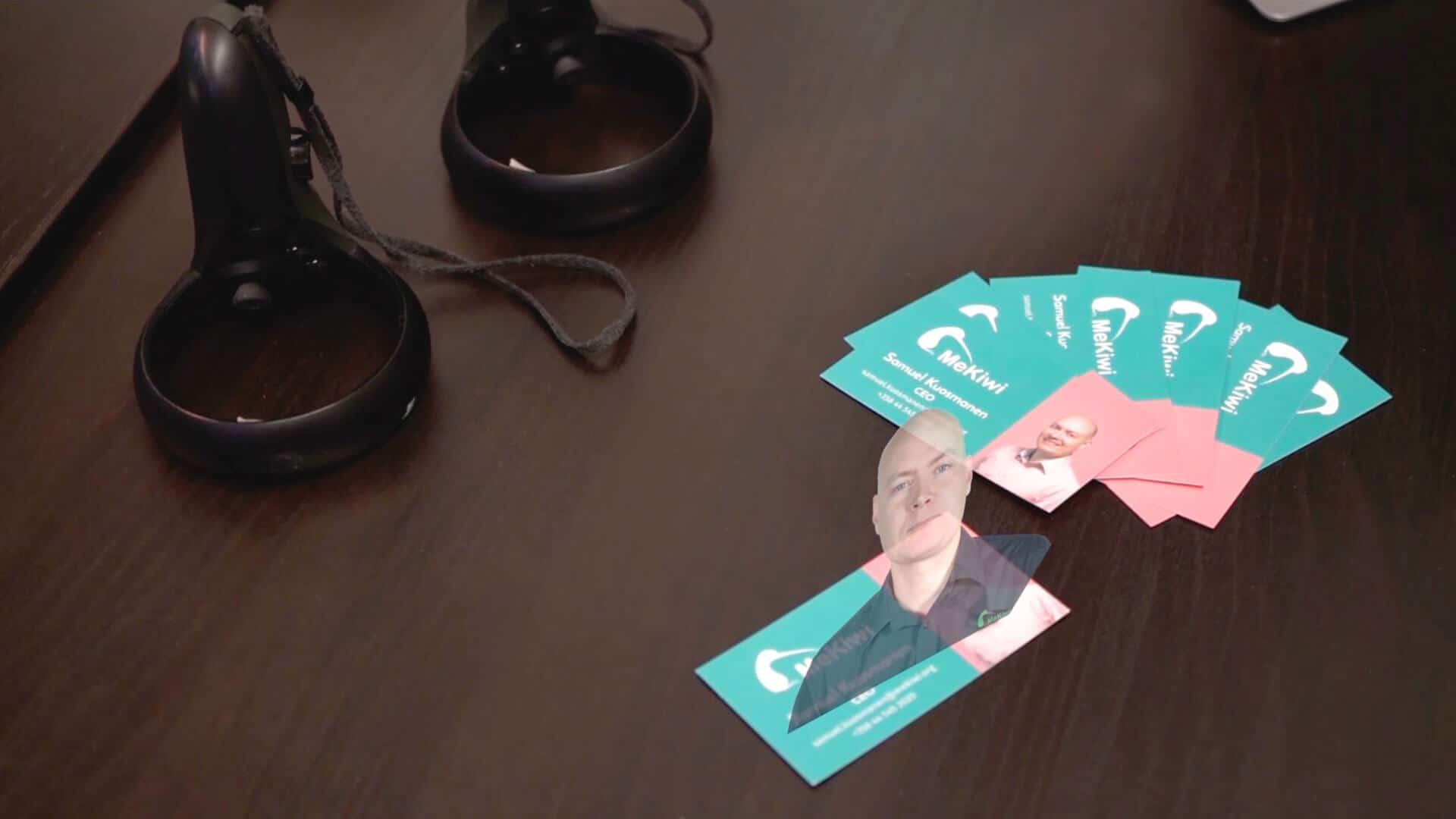
Is Augmented Reality (AR) really the future?
No, it is the present and the future. We all use augmented reality one way or another. All the face filters you can use with your phone are part of the augmented reality. When you buy a new sofa from an online store and you can test what it would look like in your living room, that is also augmented reality.
How Can I Use Augmented Reality (AR) In my Business?
Thanks to its compatibility and ability to run on mobile devices, you can integrate AR virtually anywhere in your business. The biggest advantage is that you do not necessarily need to download a separate app, WebAR works directly in your browser. The consumer clicks a button or goes to your website to start the AR experience.
Examples of how to use AR:
- Product catalogs: Digital or printed product catalogs. With augmented reality, consumers can place your product digitally in their own environment and check them with 3D models.
- Storytelling: Want to tell the story of your 200-year-old restaurant? Or maybe the tale of a medieval town? You can bring your story to life by creating interactive augmented reality content and lead the reader on this journey. Augmented reality makes cultural experiences unique and memorable.
- Online stores: With the touch of a button, users can place 3D models of products on the kitchen table, watch product videos or ask questions.
- Events: Create digitally interactive event posters that allow visitors to experience augmented reality using their phone’s camera.
- Tourism: useful information on destinations, sightseeing attractions, navigation, and directions.
- Buildings: Provide visitors with information and digital content, directions and promotional materials. Can be utilized, for example, in hospitals, shopping malls and stadiums.
- Product brochures: Offer product information, troubleshooting assistance and pre-purchase experience through augmented reality (AR) applications.
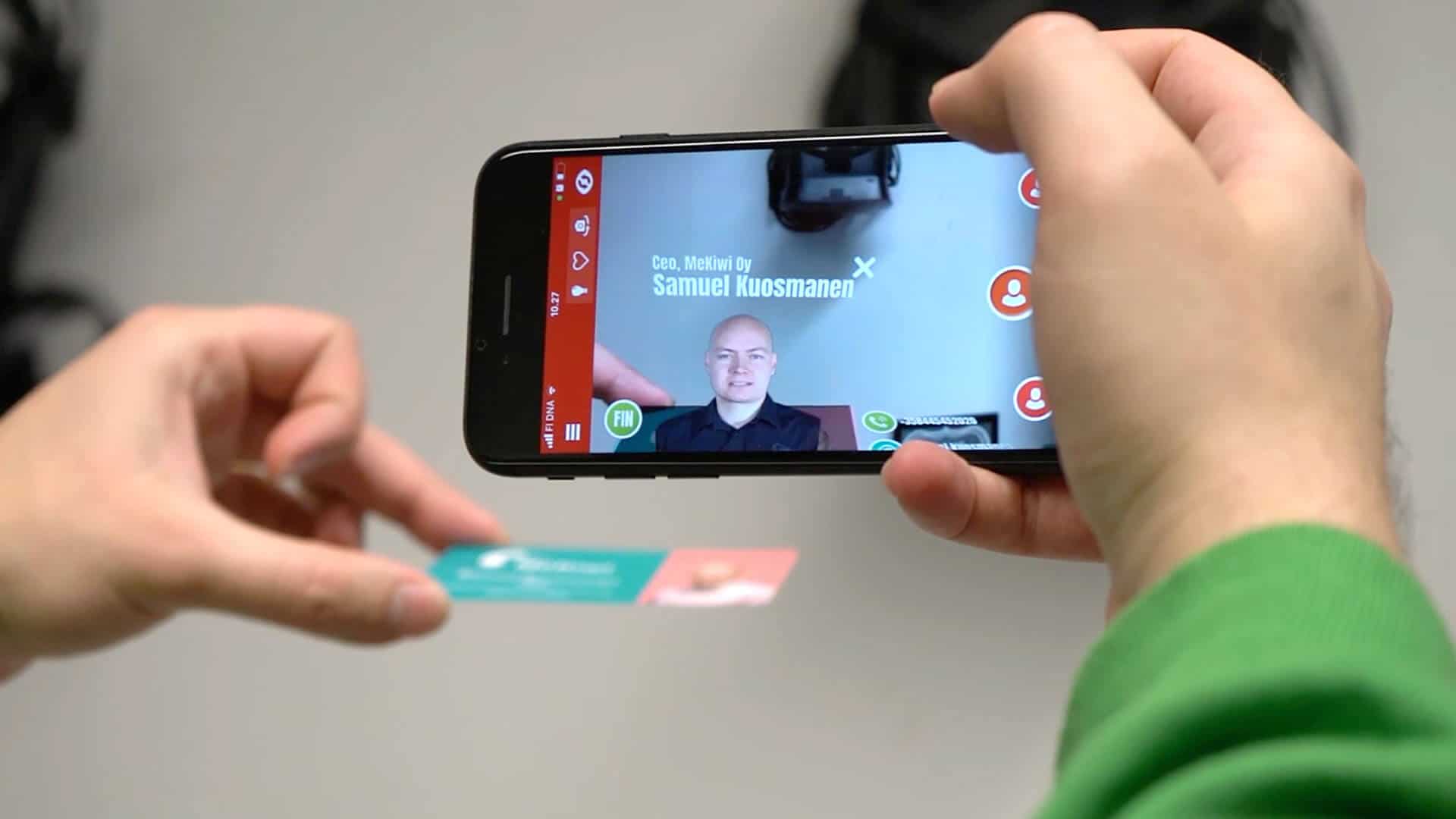
MeKiwi can help you design and implement interactive, memorable and relevant augmented reality (AR) experiences that add value to your brand. Augmented reality solutions allow brands to improve their visibility, build loyalty, engage and increase sales as needed.
Need ideas on how to use AR technology for your business?
Contact our AR expert, tai soita 0447510096.



